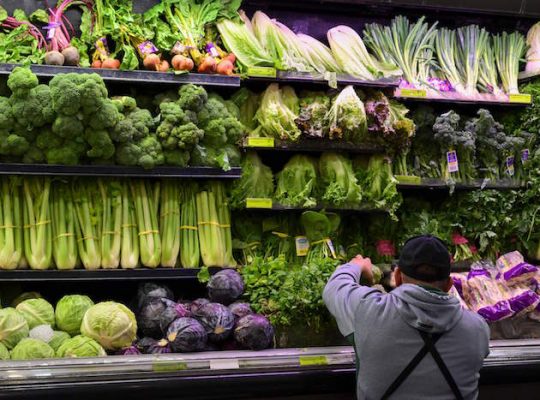Last week the Wall Street Journal reported that Amazon was planning to get into the grocery business. But wait, isn’t Amazon already in that business? To wit, in September 2017, it acquired Whole Foods Market for $13.7 billion. Organic food stores, however, are just a segment of the cut-throat supermarket industry.
Sources told the Journal that Amazon is now interested in selling the products you can’t find at Whole Foods—items not entirely organic, shall we say. On the other hand, at these alternative stores you probably won’t find asparagus water or almond and cashew milk (what an Onion article renamed "nut sweat").
In Grocery: The Buying and Selling of Food in America, author Michael Ruhlman reminds us the industry is constantly evolving. Grocery stores began as general stores (the first major one being the Great Atlantic & Pacific Tea Company in 1869, later known as A&P). Following the inventions of the cardboard box and the tin can, business boomed. At the Piggly Wiggly customers could actually pick out items on the shelves without the help of a clerk. The chains, led by A&P and Kroger, consolidated, adding more products at lower cost than the mom-and-pop corner stores, many of which went out of business.
The game was to add as many products as possible—because if you don’t have it, a potential customer will shop elsewhere. By the mid-1970s, supermarkets were carrying up to 9,000 different products. Now it’s up to a staggering 50,000 items, which explains why the profit margins are razor thin. (The moneymaker turns out to be fresh produce. Big in the loss column: the hot food bar. Apparently millennials have skipped cooking altogether.)
But grocer Jeff Heinen tells Ruhlman that supermarkets will contract in size because they can no longer compete with Whole Foods and other giants like Walmart. "Everything else will be so commoditized that we won’t be able to compete from a price perspective." Not to mention the increase in online grocery shopping, which Amazon is also spearheading.
So the old supermarket chains may get smaller and offer more specialty products, which could set them apart—except this is probably the market segment Amazon is now setting its sights on. In fact, it’s already happening, as noted in the Journal:
The company plans to open its first outlet, in Los Angeles, as early as the end of the year, one person said. Amazon has already signed leases for at least two other grocery locations with openings planned for early next year, this person said, without saying where those stores would be.
Additional talks are under way for Amazon grocery stores in San Francisco, Seattle, Chicago, Washington, D.C., and Philadelphia, the people familiar with the matter said.
In other words, when you want Kashi Organic Indigo Morning Cereal, go to Whole Foods. If you're craving for Count Chocula, come to the Amazon grocery store. Either way, those supermarkets are doomed. As I’ve said before: Much like the Borg, resistance is futile.
